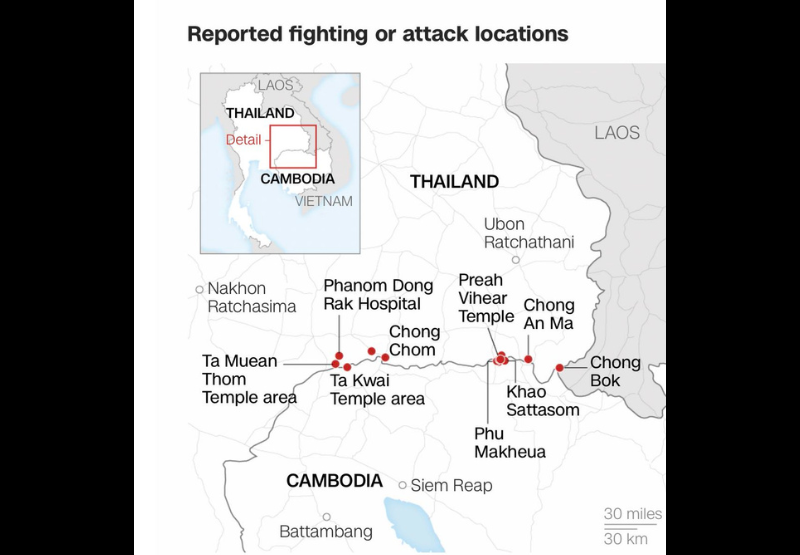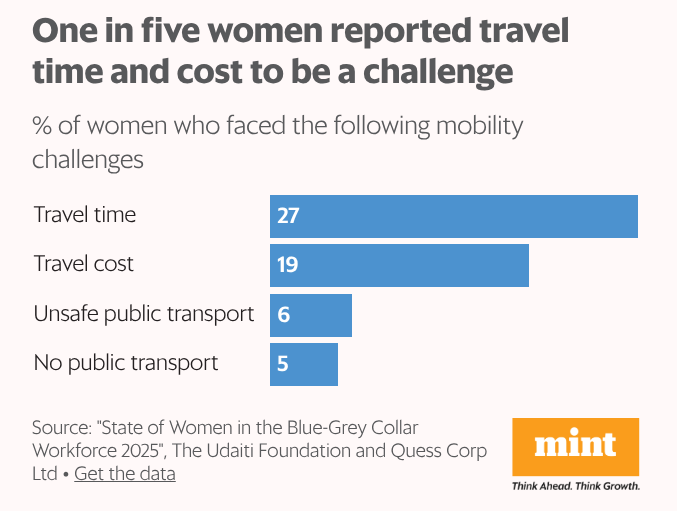Written by: Aarthi Ramnath, Raghav Bikhchandani & Yash Budhwar
Sign up for Bound’s Publishing Course!
Editor’s note: First, a full disclosure: This is a paid collaboration—but with an organisation we like and support.
India’s book, digital and magazine publishing industry has long lacked formal training—until now. Bound’s Publishing Course (Sept–Dec 2025) offers 100+ hours of live sessions taught by 40+ of the top publishing professionals across books, media, marketing, and agenting. With just a 50-member annual cohort, it’s a rare chance for students, freelancers, and career changers to enter publishing with real skills.

Thailand vs Cambodia: A Balakot moment in SE Asia
On Thursday, a long-standing border dispute between Cambodia and Thailand suddenly escalated—resulting in a barrage of mutual air strikes. The total death toll: 32—including children, civilians and soldiers. More than 200,000 people were evacuated from the border area. So wtf happened here?
The thin cause for kalesh: The root cause of this ongoing hostility is the 818-kilometre border between the two countries. As always, the trouble started when colonial powers arrived in the region—and started drawing lines on the map:
The British and French introduced the concept of nations with borders to mainland south-east Asia, drawing the first official maps of Thailand (then known as Siam) and Cambodia. In the case of Thailand, the only south-east Asian nation never to be formally colonised, the mapping was also done at the request of the Siamese kings.
The French draw a line: The trouble starts with a 1907 French map that claimed territories annexed from Siam (now Thailand). When Cambodia became independent in 1953, that map caused immediate trouble over a border temple:
Following France’s withdrawal from south-east Asia in 1954, Thailand occupied [temple] Preah Vihear. Cambodia raised the issue of Thai occupation with the International Court of Justice (ICJ), which ruled in 1962 that the temple belonged to Cambodia based on the French map. Thailand reluctantly accepted the ruling, but continued to dispute the area surrounding the temple.
You can see the disputed border below:

What’s happened now? Over the years, there have been innumerable clashes on the border—much like India and Pakistan—but there has never been an all-out war. The latest escalation is among the most serious—with casualties, recriminations and withdrawal of diplomatic staff.
But, but, but: This conflict had more to do with Thailand’s domestic politics. The real tension is between Thailand PM Paetongtarn Shinawatra and her own military. Shinawatra has been under fire for a leaked phone conversation—between her and Cambodia’s ex-dictator Hun Sen (his son is now on the gaddi):
She could be heard calling Hun Sen “uncle” and saying that if there were anything he wanted, she would “take care of it”. Paetongtarn also made disparaging remarks about a senior Thai military commander — undermining an institution that is very powerful in Thailand, and which has frequently intervened in politics.
Shinawatra was suspended asap—leaving the military to do as it wishes. And dear Uncle Hun used the political vacuum to boost his son:
He may be attempting to shore up his son’s position by fanning nationalism, said Matt Wheeler, a senior analyst at International Crisis Group, who added that Hun Manet “governs in his father’s shadow and lacks an independent power base”.
Where are we now? Exactly where India and Pakistan found themselves last month—negotiating a ceasefire while Donald Trump declares victory:
Speaking to reporters in Scotland on Sunday, United States President Donald Trump said he warned both countries that future trade agreements with Washington would be suspended if hostilities continue. “I spoke to both of the prime ministers, and I think by the time I got off [the phone], I think they want to settle now,” Trump said during a meeting with European Commission President Ursula von der Leyen in Turnberry.
Someone give the man a Nobel Peace Prize already!
Reading list: The Guardian has the most comprehensive explainer on the border conflict. The Conversation has more details on the history of the border dispute. Al Jazeera looks at the casualties and the ceasefire talks. This Guardian piece has more on the leaked phone call.
Why are Indian women fleeing the workforce?
Quick clarification: Unlike ‘blue collar’ manual labour, ‘grey collar’ jobs require some technical skills—for example, assembly line work at a factory.
The new data: A new survey shows that the 3.9 million women in blue- and grey-collar jobs are struggling to stay employed. A staggering 52% of women who began working in the past year—do not intend to stay employed. Yet the number of women in these jobs has doubled in four years. So what explains this high attrition rate? The most-cited factor is low income (54%)—followed by poor work culture (28%), safety concerns (22%), and limited career growth (21%).
In other words, they are not paid enough to compensate for the high costs of getting to work, financial and personal—as this chart indicates:

And once they get to work, they struggle with inflexible, demanding schedules, threat of harassment—and unsupportive managers.
Point to note: This is also why many women do not return to work—after they quit:
Women who have quit the workforce, returning is not simply about finding an opportunity, but also about having better work conditions. Better pay remains the top motivator, with 42% of former employees saying it would encourage them to rejoin. Other key factors include proximity to home (20%), access to training and skilling (18%), and greater workplace flexibility (17%).
The big picture: Yes, there are more women in the overall workforce—female labour force participation rate rose from 23.3% to 41.7% in 2024 over seven years. But much of that spike is due to better tracking of unpaid or distress-led work, not real jobs or better pay. (Mint, paywalled, Hindustan Times)
You’ve been pranked: AIFF ki rangeeli kahaani
The All India Football Federation’s job search for a head coach ran into unexpected trouble—in the form of a 19-year-old with a ChatGPT account.
Aap chronology samjhiye: On July 4, AIFF invited applicants for head coach of the men’s team—after Manolo Marquez was shown the door. The deadline: July 13. The federation received 170 applications—and announced a shortlist of three—Stefan Tarkovic, Stephen Constantine and the frontrunner, hamaara Khalid Jamil.
The astonishing scoop: On July 24, Times of India reported that the AIFF passed on its most high-profile applicant—Barcelona legend Xavi—because they couldn’t afford his salary. TOI even got confirmation from AIFF officials:
It’s correct that Xavi’s name was there. The application was sent to AIFF…Even if Xavi was genuinely interested in Indian football and could be convinced to take up the job, we would need a lot of money.
Cue the outrage: The story spread like wildfire as did outrage over the ‘gareebi’ and/or ‘chindi’ state of affairs at the AIFF—which dared to reject the great Xavi.
Except, not: Turns out bechara AIFF has instead rejected a a 19-year-old student at VIT Vellore—with a fake email ID and a little help from ChatGPT:
He created a fake email id, xaviofficialfcb@gmail.com, and gave a prompt to ChatGPT: “Write an email by Xavi Hernandez expressing his interest to coach the Indian football team.” He said he sent it to the AIFF twice — on July 4 and 5. “I copy pasted the [ChatGPT] response and mailed it. I didn’t attach a CV or anything but I think they saw the mail,” the student said.
This was the ‘cover letter’, btw.
AIFF damage control: On July 26, the AIFF offered this entertaining explanation:
The AIFF received an email furnishing the applications from Spanish coaches Pep Guardiola and Xavi Hernández. The authenticity of their applications could not be confirmed, and it has since emerged that the email applications were not genuine.
And you thought it couldn’t get funnier. The Telegraph reports on the prank. Times of India has Marcus Mergulhao’s now-debunked Xavi exclusive. Football journalist Ashish Negi provides some common sense on X.
what caught our eye
business & tech
- Meta has named former OpenAI researcher Shengjia Zhao as Chief Scientist of its new AI unit, Meta Superintelligence Labs.
- OpenAI CEO Sam Altman has warned that using ChatGPT for therapy comes with risks—there’s no legal confidentiality like with a real doctor.
- Hydrogen cars have lagged far behind electric ones in sales, but BMW is betting there's still a future for them—announcing its first hydrogen-powered model will go into production in 2028.
- TCS says it will cut about 12,200 jobs—mainly in middle and senior management—as it shifts toward AI and automation.
- Financial Times (splainer gift link) has a good read on how Chandrababu Naidu—now a key power broker in Modi’s government—is pushing to turn Andhra Pradesh into India’s next big tech hub with an ambitious “Quantum Valley” project.
- Quartz has the deets on why billionaires are sitting out art auctions this year, with high-end sales hitting a decade low even as interest in luxury goods and cheaper collectibles continues to grow.
sports & entertainment
- India head coach Gautam Gambhir has defended the call to keep batting for centuries despite England offering an early draw.
- Latest hit on the block, 'Saiyaara', starring newcomers Ahaan Pandey and Aneet Padda, has become only the second Bollywood film of 2025 to cross Rs 300 crore worldwide—joining Vicky Kaushal’s Chhaava after just nine days in theatres.
health & environment
- Scientists have found a 163-million-year-old dinosaur fossil in China with a birdlike throat—suggesting that the roots of birdsong go back much further than we thought.
- Indian Express has the details on a new malaria vaccine candidate developed by ICMR—called AdFalciVax—that could be a major breakthrough in the fight against a disease that kills nearly 400,000 people every year.
- The Hindu has a good read on how a widowed farmer in Gujarat’s Amreli district built a small iron shelter to keep his children safe from leopard attacks at night—his way of coping with life on the edge of the wild near Gir National Park.
meanwhile, in the world
- After a round of golf in Scotland, Donald Trump struck what both sides called a major trade deal with EU chief Ursula von der Leyen—setting a flat 15% tariff on European goods.
- Facing growing international criticism over the worsening hunger crisis in Gaza, the Israeli military says it will “pause fighting” for 10 hours daily in three populated areas "and open secure routes for aid delivery."
- NPR has a must-read on why, despite soaring hunger and devastation in Gaza—with a third of people going days without food—experts still haven’t officially called it a famine, and who gets to make that decision.
- On a related note, Israel has long claimed that Hamas steals UN aid—but top Israeli officials now say there's no evidence the group systematically took supplies meant for Gaza.
- Trump’s crackdown on immigration is picking up pace—leaving many immigrants without legal help as lawyers struggle to keep up and more are forced to face deportation alone.
- South Korean investigators say the Jeju Air plane that crashed in December still had one engine producing enough power to keep flying—even after the pilots shut down the other one.
- A man stabbed 11 people with a folding knife near a Walmart checkout in Traverse City, Michigan, USA in what officials are calling an unprovoked act of violence—six victims remain in critical condition.
meanwhile, in India
- About 94 lakh voters in Bihar could lose their right to vote through the ongoing SIR exercise, warns the Association for Democratic Rights—adding that officials may be uploading fake voter forms, raising fears of mass disenfranchisement and bogus entries.
- Reports of Bengali migrant workers being harassed and detained across several states have sparked outrage—West Bengal has now set up helplines, revived welfare cells, and deployed local TMC teams to step in.
- Another stampede—this time at Haridwar’s Mansa Devi temple which killed six and injured dozens. Police say panic over electrocution rumours may have triggered the chaos.
- Article 14 has a good in-depth read on how thousands in Assam have lost their Indian citizenship due to flawed investigations and court-backed tribunal orders that ignored legal procedures and Supreme Court directions.
Three things to see
One: The greatest skill of the English women’s team is to make the men look bad. They have now won the Euros—twice! The Lionesses beat Spain 3-1 on penalties in the final on Sunday night—thanks to Hannah Hampton’s saves and Chloe Kelly’s emphatic winner. It’s their second consecutive Euros title after 2022 and marks a moment of sweet revenge—having lost to Spain in the 2023 World Cup final. The best bit: this was the most attended women’s Euros edition ever. Reminder: The men have never won the Euros—though they reached finals in 2021 and 2024. Check out the shootout highlights below. (The Guardian)
Two: Remember Coldplaygate—when a kiss cam at their concert exposed an extramarital affair between Astronomer CEO Andy Byron and his HR manager Kristin Cabot. Byron bechara had to quit, but his company decided to make the most of his shame. It hired Gwyneth Paltrow—Chris Martin’s ex-wife—as a temporary spokesperson for the company. Watch the besharam PR vid below. (CNN)
Three: Russian player Anna Kalinskaya has been crushing it at the Mubadala Citi DC Open. She won the quarterfinals in straight sets (6-3, 7-5) against Clara Tauson on Friday and won the semifinals in straight sets (6-4, 6-3) against Emma Raducanu on Saturday. She may have lost the final but during both her wins over the weekend, it was her adorable English cream dachshund Bella who stole the show—by running onto the court to congratulate her mum. This is Bella after Friday’s win:
This is her on Saturday:
The organisers have now printed a special card for the publicity hound. (Sports Illustrated)

feel good place
One: Somewhere, over the rainbow…

Two: Lap dog? Sorry, lap elephant!
Three: IRL school of rock! Ozzy is smiling somewhere in hell:)

 souk picks
souk picks